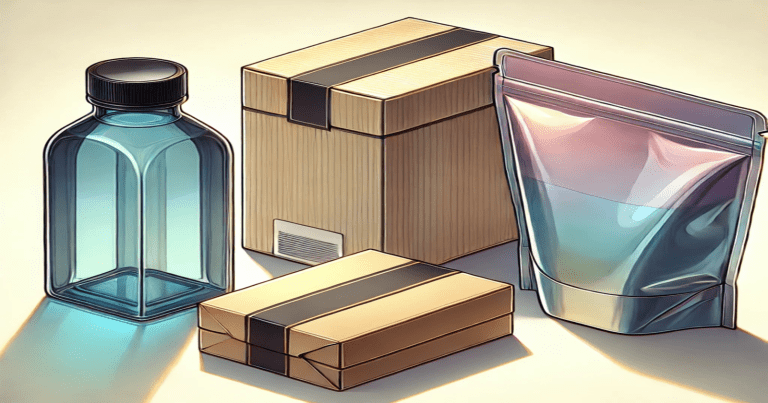Packaging is a key marketing tool that helps a business attract customers, protect products, and build brand identity. Packing refers to a very significant marketing aspect that engages most of the customers with the product directly. It does not merely confine itself to the wrapping of a product but acts as a great marketing strategy and adds to the brand’s recognition as much as packing up. It ensures the protection of the product, the psychology of an average buyer, and so forth. Appropriate packaging strategy can create an everlasting impression on the experience of establishing a brand identity in a competitive market.
Modern companies strive to innovate their packages in the contemporary business environment to gain customers’ attention. Packaging in marketing is creating and using containers or wrappers that are attractive and functional for product presentation purposes. Effective packaging would not merely cover a product; it bears reports and builds trust while establishing loyalty to the brand. Packaging for these companies is the edge to success among competitors in such unique customer experiences.
Packaging in Marketing Definition
Packaging in marketing will include the design, manufacture, and use of an object to pack a product to be used as an attraction to customers, protection against damage, and enhancement to brand identity. It selects material shapes, colours, and labelling to make a product attractive and useful. It is the first encounter between a brand and the consumer, influencing buying decisions and market positioning.
Good packing gives an organization a strong identity and communicates practically all the important information about the product. It is not just a cover but crucial in defining a customer’s perception and the distinction of products from that of competitors. Effective packaging also ensures safety, convenience, and sustainability, an important factor in modern marketing strategies.
Types of Packaging in Marketing
The form differs from that in which each packaging has to perform certain functions. This type is also useful to businesses when selecting the best product packaging.
Primary Packaging
It is the part of the pack that is the first point of contact with the product and input protection with this and helps in sales appeal. The reason it becomes primary packaging is that since it plays a major role in the act of purchasing, people first see and touch it. It will include-
- BottleCans are used for beverages and personal care products.
- Food and liquids cans.
- Tubes for cosmetic and pharmaceutical products.
- Instant wrappers are among the most common examples of primary packaging.
Secondary Packaging
The second package adds value because it gives more protection and brand visibility. The pack can accommodate multiple units of primary packaging together and can be used for storage and transportation. Secondary packaging is important to increase the product’s visibility and ease of handling in retail presentation. They include examples of this as:
- Toothpaste cartons, and medicine bottles.
- Cardboard boxes for electronics and home appliance goods.
- Shrink wraps for bottled water packs.
- Biodegradable trays for yoghurt and dairy products.
Tertiary Packaging
When used in bulk, neither consumers nor end-users can see tertiary packaging. However, while such packaging cannot be seen externally, it still plays a major role in logistics. Tertiary packaging includes:
- Pallets for stacking and shipping large quantities.
- Containers for international trade.
- Crates for fragile or perishable goods.
- Tertiary packaging helps ensure efficient supply chain management and safe delivery of products.
Functions of Packaging in Marketing
Packaging performs several important functions in deciding whether the product will succeed in the market. Convenient designs, resealing, and presentation increase the user experience regarding packaging. It also boosts satisfaction and loyalty toward the brand combinedly.
Every product, regardless of being a luxury or basic necessity, is based on its packaging to indicate its worth. The packaging is a mute salesman, enticing customers into buying.
Protection and preservation
The first primary function of packaging. It protects the product against damage, contamination, and spoilage. It ensures that goods remain intact during transport, storage, and handling. Good packaging extends the shelf life of perishable products such as food and pharmaceuticals, ensuring their quality and safety.
Attracting Customers
Attractive packaging grabs consumers’ attention and gives good impressions of the product. Beautiful colours, distinctive shapes, and thoughtful designs help a product pop off retail shelves. Many brands differ and bring innovative packages to woo and inspire consumers.
- Providing Information
- Vital information about products comprises:
- Ingredients and nutrient value.
- Instruction on usage and safety measures.
- Manufacturing and expiry date.
- Name and logo of the brand.
- Informative packaging helps consumers make informed choices and builds confidence in the brand.
Improve Brand Identity
Packaging has always played a primary role in brand recognition. Packaging is usually the stylistic feature that gives a strong brand a strong identity, which makes it easier for consumers to recognize and remember the product. Usually, in successful brands, packaging is marketing the brand itself in a marketplace.
Packaging and packaging in Marketing
Packaging is a strong marketing device, the most important tool for influencing consumers on the one hand and for purchases on the other. Unique packaging can help make a product stand out in a crowded marketplace. Companies must find unique designs for their packages to lure prospects from competitors in crowded markets. Enhancing the package creates a hype that brings customers into purchasing unexpectedly. Packaging, which elicits emotions and reinforces brand messaging, definitely increases sales and loyalty.
Sustainable Environment
Today’s audiences prefer environmentally friendly packaging. The sustainable packaging has earned customer loyalty and proven that the business is socially responsible. Packaging solutions, such as recyclable and biodegradable, prevent waste and help preserve the environment.
Importance of Packaging in Marketing:
Packaging is silent marketing. It uses a very systematic approach to direct influence towards the consumer. It’s an essential determining factor in
- Brand Positioning: Packaging defines the brand position in the market. It is possible to use premium packaging for luxury brands and keep things simple yet effective for budget brands.
- Consumer Experience: Easy-to-handle packaging improves overall customer experience. More easily open, resealable, and conveniently designed packaging will help increase customer satisfaction and brand loyalty.
- Advertising and Promotions: To carry marketing, signage as a medium on packages include promotional offers, loyalty programs, and QR codes. Communication goes beyond the point of purchase and covers the entire engagement in consumers’ lives with the brand message.
Packaging In Marketing FAQs
What is packaging in marketing?
Packaging is the design, manufacture, and use of containers or wrappers for presenting and protecting products while enhancing overall brand appeal. This writing influences consumer decision influence for recognition in the brand.
What are the types of packaging in marketing?
There are three major types of packaging: primary packaging, which is single access into contact with the product; secondary packaging, which is for added protection and branding; and tertiary packaging, which ranges in imports and exports.
Why is packaging important in marketing?
Different helps the brands and encourages brand loyalty. It increases the odds of purchase and sales just like in other forms of marketing.
How does packaging impact the identity of brands?
Packaging books a visual identity for a brand. Through consistent colours, logos, and designs, a product becomes easier to recognize by the customer and assures trust.
What is the role of packaging in the consumer experience?
Companies realize that the costs incurred in good packaging design become capitalized into sales and improved investments in the market. As competition becomes tougher, innovative brands update their packaging regularly to meet changes in customer needs and trends in different industries.


